A nursing mother will have to give up many of the foods that she previously consumed. Often even local fruits and vegetables are in doubt, not to mention exotic fruits. The attitude to kiwi with HS is mixed among specialists, therefore, before introducing it into the diet, it is important to take into account all the nuances, possible contraindications and side effects.
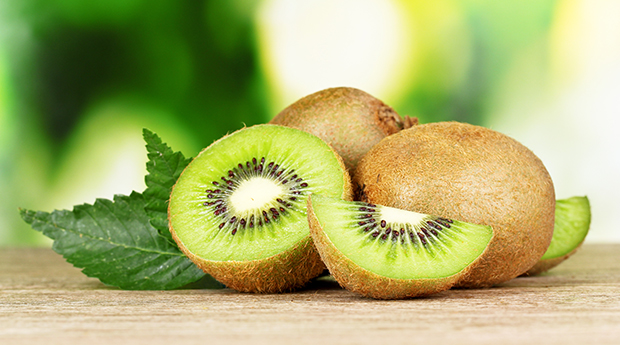
Composition of Exotic Fruit
The bulk of the fetus is water (approximately 84%). In addition, it contains proteins and fats (approximately 1% each), as well as 10% carbohydrates.
Kiwi is a storehouse of vitamins, such as:
- Vitamin C. It is present even in greater quantity than in citrus fruits. To replenish the daily norm of vitamin one fruit per day is enough.
- Vitamins E and A, which are useful for skin, nails and hair, which is very important for nursing mothers who want to tidy their appearance after childbirth.
- Folic acid, which is considered a female vitamin, improves blood composition, strengthens the immune system and bone tissue, and increases resistance in stressful situations.
- Vitamin B 6 (pyridoxine), which is especially necessary for pregnant and lactating women.
Kiwi's peculiarity is that the vitamins present in it are not destroyed during the canning process.
In addition, the berry is rich in micro- (iron, zinc, iodine, etc.) and macrocells (potassium, calcium, phosphorus). Also, fiber is present in it, helping to get rid of such a problem as constipation, which often affects young mothers after childbirth.
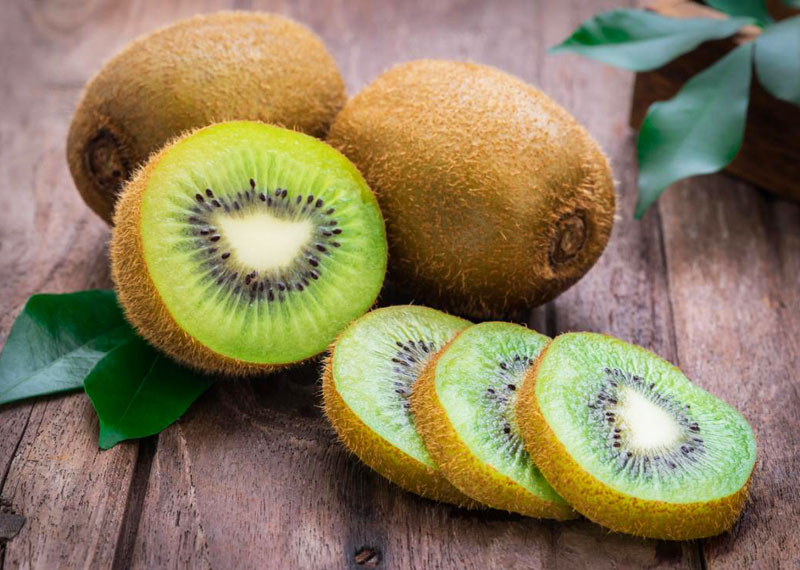
The presence of a unique enzyme in the fetus, actinidine, which breaks down proteins, normalizes the blood coagulation process, and positively affects the digestive system, was also found. In 100 g of the product - 48 kcal.
Useful properties of the fetus
The composition of the vitamins and trace elements of kiwi provides its valuable properties:
- Increased immunity due to vitamin C, which is useful for an organism weakened by childbirth.
- Normalization of the digestive tract, elimination of constipation, elimination of toxins due to the presence of fiber.
- Activation of the process of cell renewal.
- Strengthening the walls of blood vessels.
- Prevention of kidney stones due to increased water content.
- Positive effect on vision, skin condition.
- Normalization of blood pressure.
- Protection against thrombosis. Everyone knows that carrying a baby exacerbates the vein problems that a woman had before pregnancy. And after childbirth, pathology can progress. In this case, the use of kiwi with HB will be especially useful.
In addition, this fruit contributes to weight loss, which is very important for many nursing mothers, who managed to gain a few extra pounds during the gestation of the baby. The substances contained in the product break down fats and help better absorption of food. In order to lose weight, it is recommended to eat the fruit 30 minutes after eating.
The sugar content in the fruit is moderate. This allows you to use it even for those women who are diagnosed with diabetes.
Kiwi for nursing mothers
Doctors do not give a definite answer whether kiwi can be used while breastfeeding. The use of the fetus is possible subject to precautionary measures and in the presence of certain conditions. We will study in detail:
- The baby should be at least 3 months old. Kiwi with GV in the first month is undesirable. After all, the digestive system of the baby is not ripe enough.
- Mom was familiar with the fetus even in the process of bearing the baby and before pregnancy, while undesirable reactions were not seen.
- The introduction of berries on the menu is gradual. First you can try a small piece and wait a few days. If the crumb body responds normally to the introduction of a new product, you can try to increase the portion.

- If the baby is prone to allergic reactions, introduce kiwi into the diet should be no earlier than six months. You will also have to wait if the mother’s body responds to bloating with fresh fruit.
- The benefits and harms of kiwi to the body also depend on the amount of consumption. Moderation is important here even in the absence of negative reactions - 1-2 fetuses per day is quite enough.
- Before introducing a new product into the diet, you need to consult a pediatrician. Based on the individual characteristics of the crumbs, the specialist will evaluate the feasibility of using the product.
Young mothers are interested in the question of whether there may be an allergy to kiwi. Since the fruit belongs to the category of exotic, negative reactions can occur in both the mother and the baby. It is also possible with excessive use by a nursing woman.
Contraindications
Despite its benefits, the fetus also has contraindications:
- If a woman had allergic reactions to the fetus even before pregnancy, its use should be discarded.
- Do not include in the diet in the presence of pathologies of the kidneys, as well as ulcers or gastritis.
- To delay with the use of the fetus should be in the case of loose stool in a child. Due to the laxative effect of the product, the situation can only get worse.
When using kiwi, it should be borne in mind that a high content of C can adversely affect the state of tooth enamel, and during the period of gestation and during lactation in women, problems with teeth arise. Therefore, after you have eaten fruit, it is advisable to rinse your mouth with water or brush your teeth.
How to choose a kiwi
The benefits and harms to the body of any product depend on its quality. To use kiwi as useful as possible, you need to choose it correctly. Inspect the fetus carefully. Stains, dents, defects and damaged skin are a sign of a poor-quality product. Pay attention to the smell. Do not buy the fruit from which the wine aroma comes from, most likely the fruit is overripe. When pressed, liquid should not ooze. It is better to give preference to those that are medium in size.
Many experts advise choosing a slightly unripe fruit. Putting it in a warm place, and even better next to a ripe apple, you will accelerate the ripening process. It is stored in the refrigerator for a long time, especially in a container with a lid. In the freezer, you can store the fetus for up to 10 months.
Uses for lactating mothers
The maximum benefit can be obtained by eating the fruit fresh. It is better not to drink undiluted kiwi juice in case of hepatitis B, as the appearance of an allergic rash is possible. It is better to dilute it with water (1: 6).
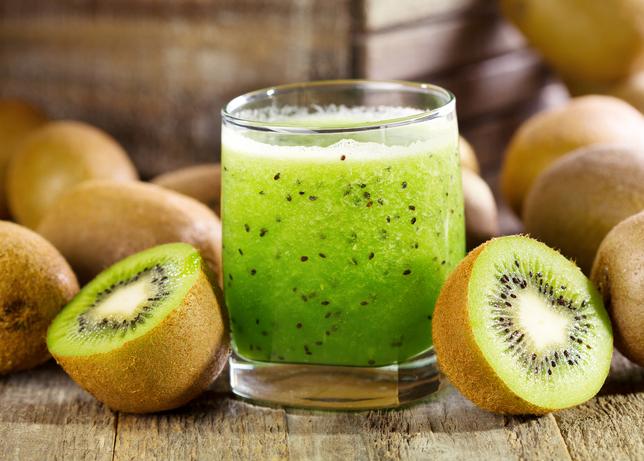
When using the fetus in the form of an additive to dishes, you can reduce the burden on the baby's body. You can add slices of kiwi to porridge, cottage cheese, yogurt or salad.
Vitamin Salad
This healthy dish can be consumed during lactation. Have to take:
- leaf salad;
- small zucchini;
- half a kiwi;
- cottage cheese - 40 g;
- hard cheese with a low fat content;
- olive oil - 1 tsp;
- lemon juice.
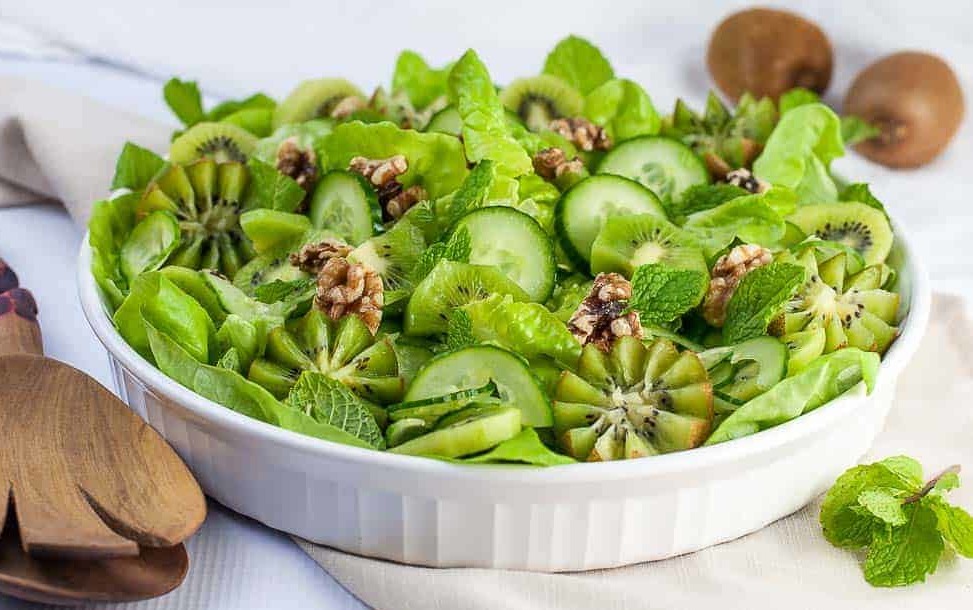
How to cook:
- Leave the lettuce leaves.
- Steam the zucchini. Cut it and kiwi into small cubes.
- Add cottage cheese.
- Season with olive oil and lemon juice.
- Garnish with grated cheese.
Salad "Africa"
Another salad that will help diversify the menu of a nursing mother.
You will need:
- 250 g chicken;
- 100 g of hard cheese;
- 2 boiled eggs;
- 1 apple
- 1 kiwi
- 100 g Korean carrots;
- 100 ml of sour cream.

How to cook:
- Boiled chicken fillet, kiwi is cut into small cubes.
- Grind eggs, apple and cheese on a grater.
- Spread the components in layers on a dish: fillet, kiwi, egg, apple, cheese, Korean carrots. Each layer needs to be smeared with sour cream.
- They put in the refrigerator for an hour and a half.
Compotes
The fruit is able to maintain its beneficial properties even when frozen. The fruit can be peeled and cut into pieces, put in the freezer and removed as needed, adding to fruit and berry compotes.
Such a drink will be useful not only for the woman, but also for the baby. But the crumbs are allowed to use compote only after reaching 9 months.
Fruit ice
This recipe is useful for young mothers in the heat. The treat will quench your thirst and saturate your body with vitamins.
Have to take:
- 3 kiwi;
- 150 ml of water;
- 2 tablespoons of sugar;
- lemon juice to taste.
Cooking:
- Lemon juice, sugar are added to the water, heated until the latter is dissolved.
- The peeled fruit is ground on a grater or using a blender.
- Combine the resulting mass with syrup.
- Poured into forms that are designed for ice cream.
- Sent to the freezer for three hours.
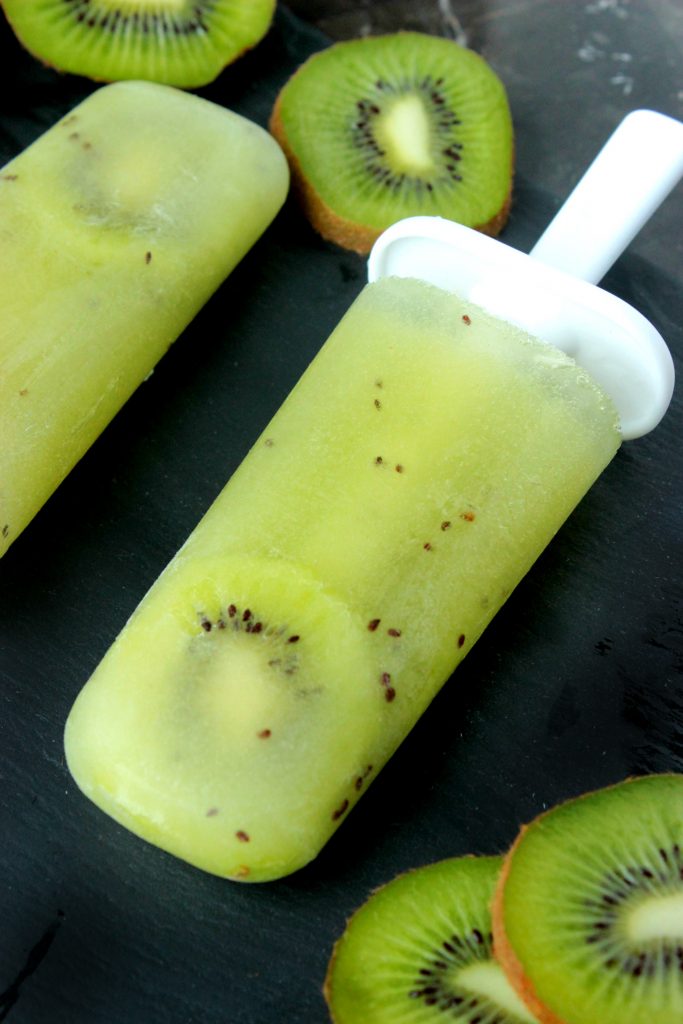
When wondering if kiwi can be breastfeeding, young mothers should remember that they should be selective and careful, including something new on the menu. In this case, it is necessary to take into account possible contraindications and the presence of pathologies in both the mother and the baby. Kiwi with GV will benefit if all precautions are taken, help diversify the diet, ensure the well-being of women, the active growth and development of crumbs.